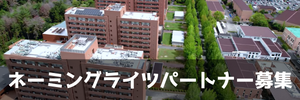(English announcement can be found in the latter half of this notice.)
広島大学バイオマスプロジェクト研究センターと中国地域バイオマス利用研究会の共催で広島大学バイオマスイブニングセミナーを開催しています。バイオマスに関する基本的な考え方から最先端の情報までをカバーして、この地域におけるバイオマスの活動に資することを目的とするものです。第56回を以下の日程で開催しますので、ご参集下さい。
日時 2017年9月13日(水)16:20~17:50
会場 広島大学東広島キャンパス工学部106講義室
http://hiroshima-u.jp/eng/access/lectureroom
http://hiroshima-u.jp/eng/access/building
http://hiroshima-u.jp/access/
プログラム
解説 広島大学大学院工学研究科 教授 松村 幸彦
講演 広島大学大学院工学研究科 D3 Paksung NATTACHA
「亜臨界及び超臨界条件におけるリグノセルロース系バイオマスのガス化: モデル物質間の相互作用およびプロセスの評価」
バイオマスを効率よくエネルギーに変換する技術の一つに超臨界水ガス化があります。この技術は高温高圧条件下での熱水反応を用いたエネルギー回収法であり、水中で処理を行うので、原料のバイオマスが水を含有していても問題はなく、高い反応性を持っています。さらに、乾燥プロセスが必要でなく、水素収率が高いため、有望な技術です。しかし、バイオマスは色々な化合物があり、プロセスを最適化するのに困難です。それによって、バイオマスの変換する反応機構を検討するのが必要です。リグノセルロース系バイオマスではセルロース、ヘミセルロース、リグニンです。本研究では亜臨界及び超臨界水中におけるリグノセルロース系バイオマスのガス化を検討します。モデル物質間の相互作用およびプロセスの評価が行われました。
講演 広島大学大学院工学研究科 客員研究員 Obie FAROBIE
「超臨界バイオディーゼル生産:最先端技術」
地球規模の気候変動と環境汚染問題を緩和する努力は、再生可能エネルギーの研究に大きな注目を集めています。再生可能エネルギーの最も顕著な形態の1つはバイオディーゼルであり、これは植物油、微細藻類または動物性脂肪を含むバイオマス由来です。これまでバイオディーゼルを製造するためにいくつかの方法が用いられてきました。現在、超臨界バイオディーゼル製造は、触媒が不要で、滞留時間が短く、反応速度が速く、前処理要件がなく、多種多様な用途に適用できるという利点を含む、他の方法よりもいくつか利点があるため、激しい開発が行われている供給原料です。この技術は、メタノールとエタノールを使用したバイオディーゼル生産のために最初に設計されました。最近では、超臨界酢酸メチルおよびtert-ブチルメチルエーテル(MTBE)におけるバイオディーゼル製造も開発されています。この論文では、超臨界バイオディーゼルの製造について詳細に議論します。最後に、超臨界バイオディーゼル製造におけるエネルギー回収ならびに反応物要求を改善するための課題および将来の研究のための勧告が提供されます。
司会 広島大学大学院工学研究科 教授 松村 幸彦
なお、18:00より意見交換会(参加費 800円)を開催します。ご都合の付く方はこちらにもご参加下さい。
The 56th Hiroshima University Biomass Evening Seminar
(The20th Hiroshima University ACE Seminar)
Biomass Project Research Center, Hiroshima University, and HOSTY Association are co-organizing the Hiroshima University Biomass Evening Seminar. This seminar covers topics from the fundamentals of biomass to the latest information so that it can contribute the activities on biomass in this district. The 56th seminar will be held as follows. Please join.
Date & Time:Wed .13 Sep., 2017 16:20-17:50
Place: Engineering 106 Lecture Room, Higashi-Hiroshima Campus, Hiroshima University
http://hiroshima-u.jp/eng/access/lectureroom
http://hiroshima-u.jp/eng/access/building
http://hiroshima-u.jp/access/
Program
Commentary: Yukihiko MATSUMURA
Professor, Institute of Engineering, Hiroshima University
Lecture: Paksung NATTACHA
D3 Student, Graduate School of Engineering, Hiroshima University
“Gasification of Lignocellulosic Biomass under Sub- and Super Critical Water Condition: Interaction between Model Compounds and Process Evaluation ”
Supercritical water gasification (SCWG) is promising method to convert biomass into gaseous products. At supercritical state of water, biomass could be homogeneously dissolved in supercritical water and consequently obtain high conversion. However, biomass consists of various compounds that make difficulty to optimize the process. Thereby, reaction scheme and model compound of biomass are keys to achieve the goal. For lignocellulosic biomass, it contains mostly cellulose, hemicellulose and merged by lignin. This research includes fundamental studies, which elucidates mechanisms of model compounds of lignocellulosic biomass in terms of kinetic analysis. A detailed kinetics study allow ones to predict the outcome of the reactions. Furthermore, practical utilization of SCWG system was evaluated to reveal its feasibility in terms of energy, economic and environmental viewpoints.
Lecture: Obie FAROBIE
Visiting Reseacher, Institute of Engineering, Hiroshima University
“Supercritical biodiesel production: A-state-of-the-art ”
An effort to mitigate global climate change and environmental pollution problems has attracted a tremendous attention in researching renewable energy. One of the most promising renewable energy is biodiesel, which can be derived from the biomass including vegetable oil, microalgae, or animal fats. Several methods have been employed so far to produce biodiesel. Nowadays, supercritical biodiesel production has undergone a vigorous development as the technology offers several advantages over other methods, including the fact that it does not require a catalyst, short residence time, high reaction rate, no pretreatment requirement, and applicability to a wide variety of feedstock. This technology was first employed for biodiesel production using methanol and ethanol. Most recently, biodiesel production in supercritical methyl acetate and tert-butyl methyl ether (MTBE) has been developed also. In this paper, supercritical biodiesel production will be discussed in detail. Finally, challenges for improving energy recovery as well as reactant requirement in supercritical biodiesel production and recommendations for future work are provided.
Chair: Yukihiko MATSUMURA
Professor, Institute of Engineering, Hiroshima University
We will hold the discussion meeting from 18:00 (800 JPY needed). Join this meeting, too if you are available.


 Home
Home









